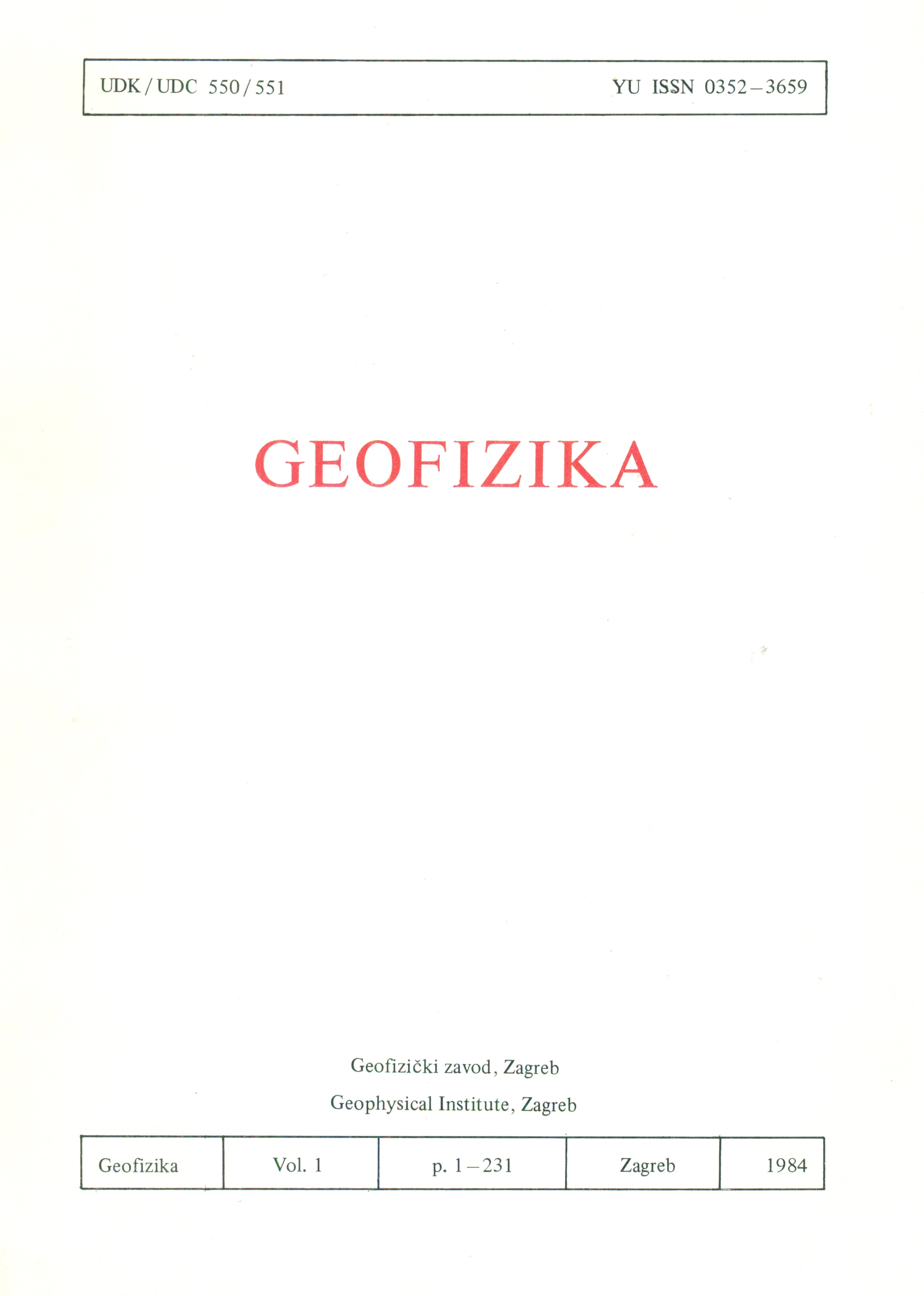Influence of parameters of an earth’s crust and upper mantle model on Rayleigh waves dispersion
(in Croatian)
Abstract
In this paper we considered the influences of the changes of the crust and upper mantle earth model parameters on the Rayleigh waves group velocity dispersion. Final result of such analysis is necessary as the first step in the inversion of dissipation data for the earth interior.
The partial derivatives of the group velocity with respect to the shear wave velocity ß density ρ and the layer thickness d were calculated for the continental earth model PEM of Dziewonski et al. (1975), (Table 1). We have modified the model by adding a thin sedimentary layer on top of it. The Thompson-Haskel matrix method (see Appendix) was used for the calculation of theoretical phase velocity dispersion curves with and without taking earth sphericity into account (Fig. 1). Partial derivatives were calculated by the finite difference method (equations (1), (2)). Figures 2, 3 and 4 represent the partial derivatives curves with respect to ß, ρ and d, respectively. The numbers on the curves denote the layers in which the parameter in question was changed.
The conclusions of the analysis are the following:
(i) Shear wave velocity shows the greatest influence upon the group velocity of Rayleigh waves. The influence of the layer thickness is more expressed, the thinner the layer is.
(ii) Partial derivatives with respect to ß have peaks for periods that correspond to wave lengths of 3.45-3.80h (h being the depth to the middle of the layer) except for the fourth layer where the wave length equals 3.15h.
(iii) Changing the layer thickness results mainly in shifting the group velocity curves toward smaller or greater periods without changing the value of the neighbouring extreme.
Downloads
Published
Issue
Section
License
Copyright (c) 2021 Geofizika journal

This work is licensed under a Creative Commons Attribution-NonCommercial 4.0 International License.

